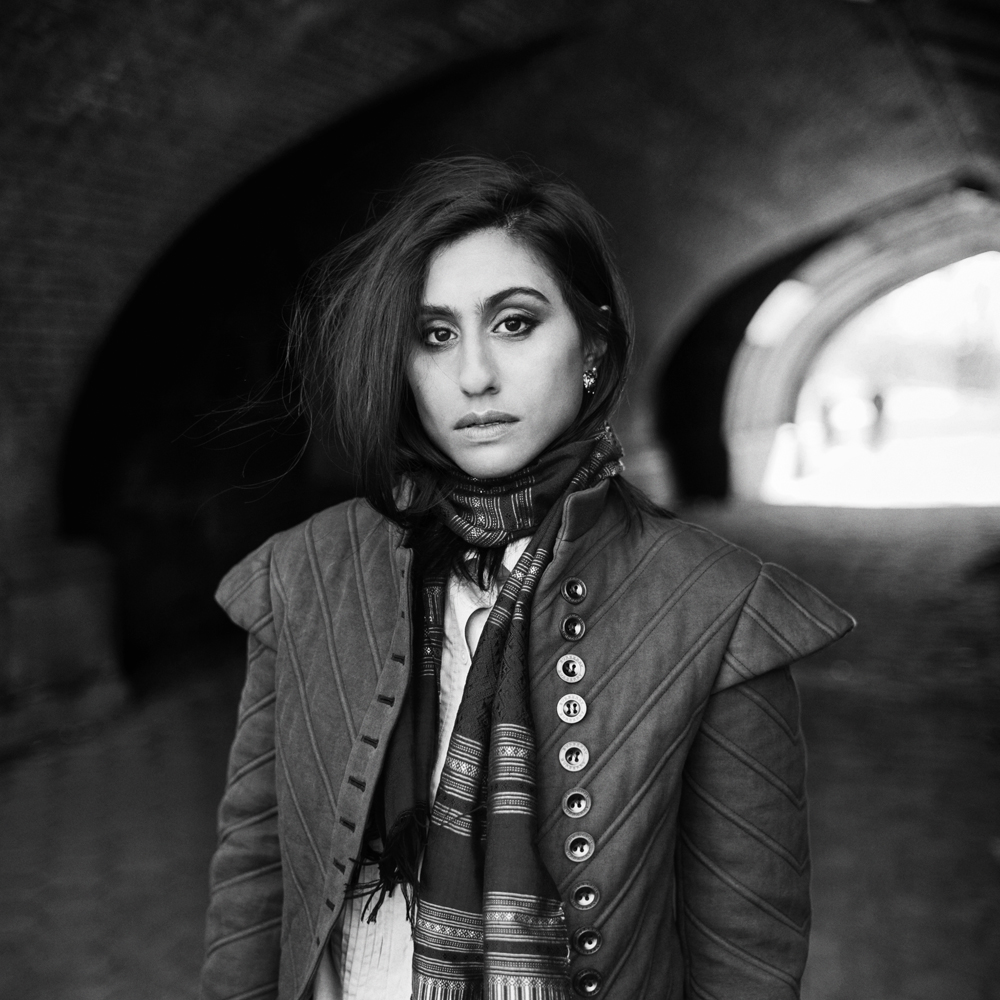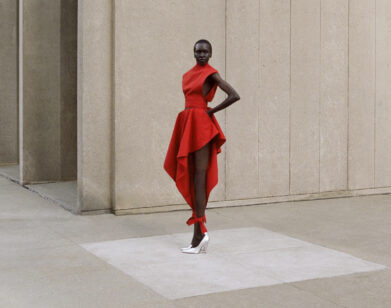Durga Chew-Bose

DURGA CHEW-BOSE IN NEW YORK, MARCH 2017. JACKET AND TOP: BURBERRY. EARRINGS: CHEW-BOSE’S OWN. SCARF: MEESH. STYLING: MICHELLE CAMERON. HAIR: DENNIS DEVOY USING KÉRASTASE FOR WHITEROOM BK/ART DEPARTMENT. MAKEUP: STEVIE HUYNH/BRYANT ARTISTS.
Three years ago, Durga Chew-Bose, a then-28-year-old freelance writer in New York, was chosen by a mystery curator to read in a literary series called Secret Admirer. The event, held in someone’s Brooklyn apartment, also featured the writer Luc Sante. After hearing Chew-Bose read, Sante promptly contacted publisher Jonathan Galassi to rave about the young woman. What happened next is the literary equivalent of being signed by a Wilhelmina model scout while shopping at a mall in Norman, Oklahoma. Galassi e-mailed Chew-Bose and arranged a meeting. The result is Too Much and Not the Mood, a collection of delightfully insightful essays published by FSG Originals this month.
“In the past, I felt like I was in the service of writing about and for other people,” Chew-Bose says about the difference between her freelance work and penning her own essay collection. “Now I feel like I can write for myself. I feel like I created a home for my work that’s my own.” Fittingly, the book’s title is taken from the last line of a Virginia Woolf diary entry. Chew-Bose, whose parents are from Kolkata, grew up in a small, close-knit family in Montreal and moved to the United States at age 17 to attend a two-year boarding school in New Mexico. As a child, she envied the girls around her—white girls mainly—awed by their casual natures as well as their incuriosity. Chew-Bose wanted to belong but tended to watch instead from the sidelines. “I like the corner,” she says. “I had to develop young a utility for being forced to the side. When you don’t feel a natural belonging, a normal reaction is, how can I use this? I was collecting images from that vantage point.” Those images appear in exquisite detail throughout the 14 essays that comprise this meditation on the self in a society that codifies sameness. Whether Chew-Bose is riffing about her own difficult-to-pronounce name or dead squirrels, the bounty of the book lies below the surface, in the subterranean underworld of each essay. Collected there are the discards of daily life: the textures we ignore, the memories we hold for later and never return to. Chew-Bose seems to pay close attention while everyone else races ahead to the next thing, and she’s generous with her findings. “You carry ideas and images with you for so long, ” she says, “you just have to find the language for it, because the images have always been there.”
Part of that generosity reveals itself in her abounding references to other artists—from painter Karin Mamma Andersson to playwright Annie Baker. In some ways, the book functions like an interactive experience happening in real time, and the rain of cultural allusions broadens the reader’s knowledge base. Ever curious, Chew-Bose was headed to Chelsea after we met over coffee to discuss her book. She wanted to catch the Alice Neel exhibit, and she promised a full report.






